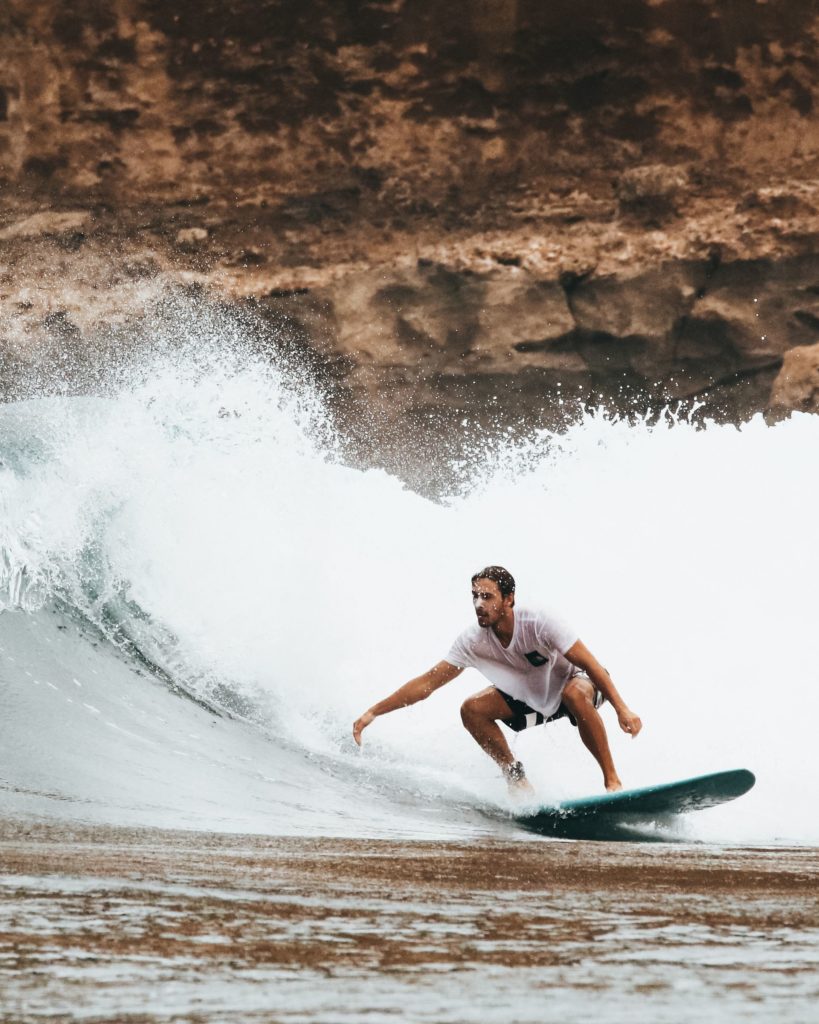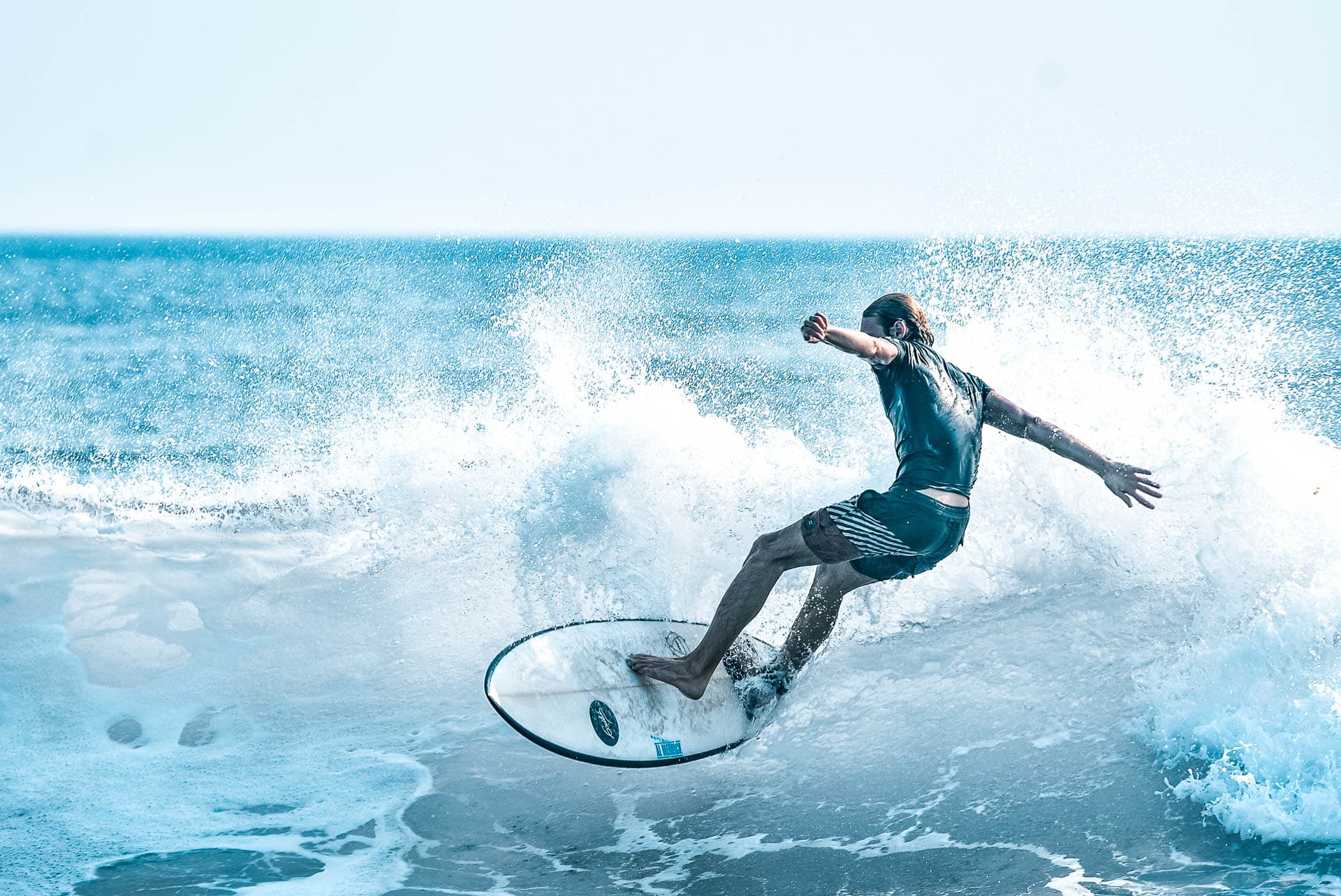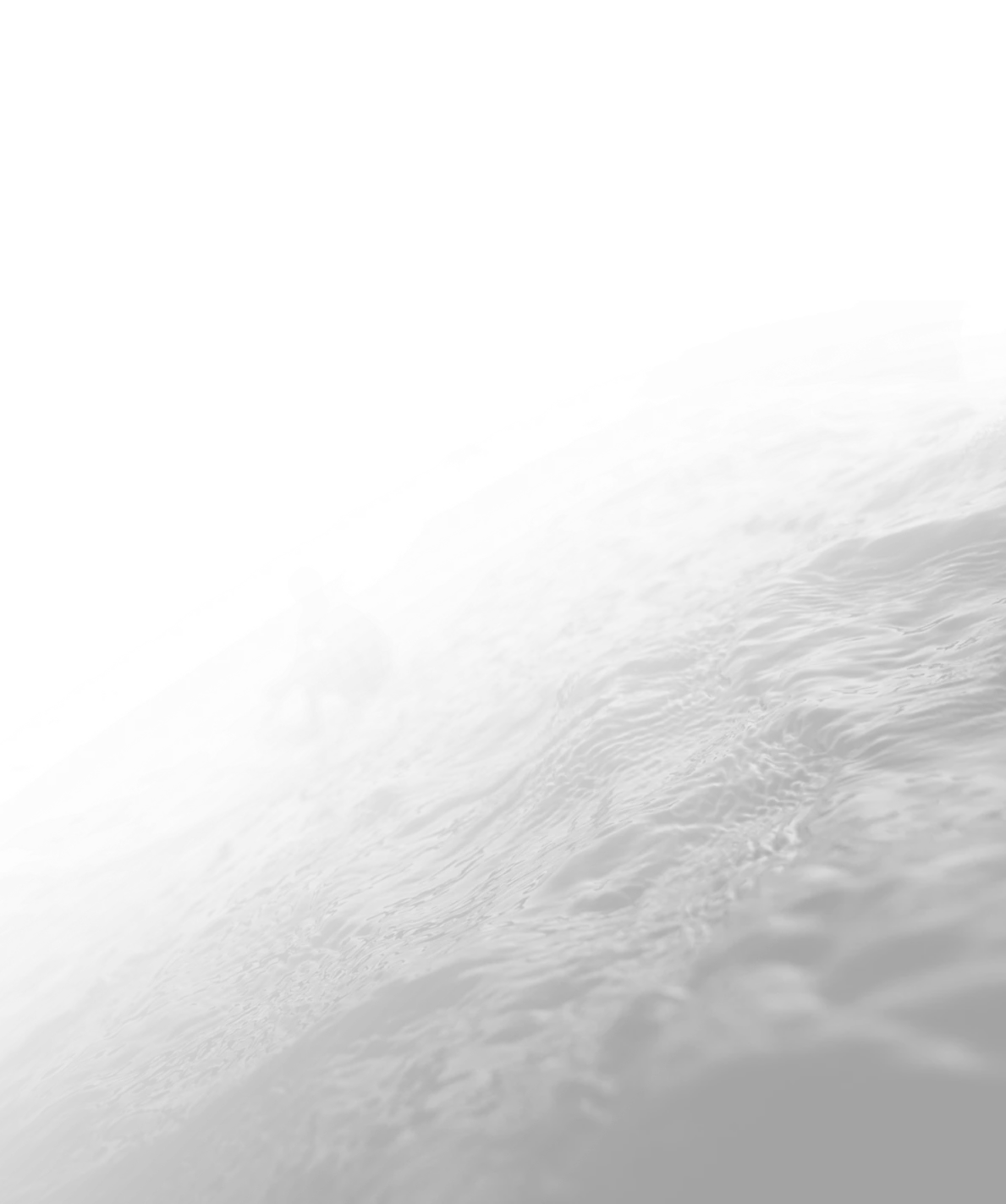Surfing is a high energy activity. This means in order to be successful at it, you’ve got to be of a reasonable level of fitness. Of course, the best way to remain fit for surfing is to do just surf but what if you don’t have an place to practice near your home? Read on to find out what you can do.
If you don’t live near surfable waves, keeping in shape can be pretty difficult: this is certainly the case for many guests who stay at our beginner surf camps around the world.
When you are at a surf camp, you have the chance to attend daily surf lessons at the camp you’ll build a surf fitness with every single session and when you leave you’ll feel stronger, more flexible, and much more confident than when you arrived. The problem is that once you return home and stop surfing consistently any gains will gradually begin to disappear. So that when you do head back to surf again, you have to basically start your training from scratch.
With this tips, we’ll show you some ways to stay in shape, maintaining the right fitness level even when you’re not surfing. This will ensure that you are alwasy ready for your next surf trip.
Staying active especially is important for your physical and mental health, so make sure you incorporate some exercise routine in your daily schedule.
Here are some things landlocked surfers or those without any surfable water bodies around them can do to make keep their bodies in shape in between your surf adventures:
1. Pick up a Skateboard
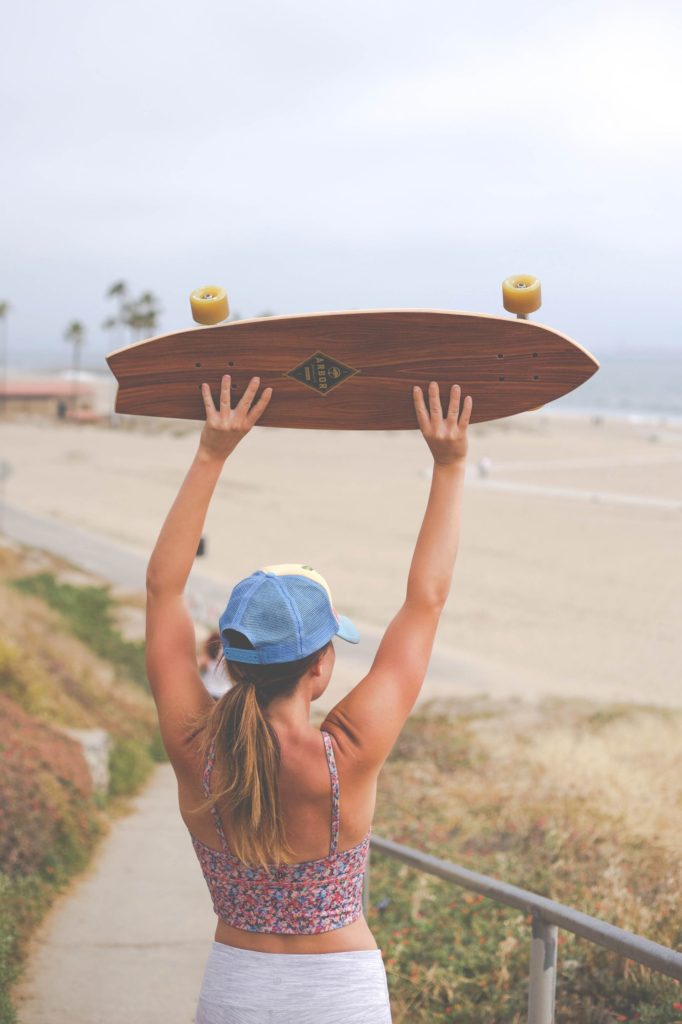
The only thing that helps you improve your surf skills is to surf more. If you don’t have any surf-able water bodies near your home, we’ll tell you how to practice surfing at home. While that’s true in many respects, a skateboard is a fantastic substitute for a surfboard for landlocked surfers.
With a skateboard, beginner surfers can still get a feel for what it’s like to be planted on a board. Sure, the sensations and the environment will be totally different. And we would prefer saltwater to concrete every day of the week.
The movements you perform on a skateboard, however, can be adapted. So that they somewhat imitate those you would perform on a surfboard. Training for surfing while bending at the knees, keeping a straight back and dropping your back knee when you arc through turns are just some examples of things you can practice while skateboarding. If you want a taste for what it’s like to pull into a barrel you can try crouching down low whilst maintaining your balance.
Carve boards such as Sector 9s are the best types of skateboards to use for that authentic surfing feeling. Given that to generate speed on them you’ll need to pump your legs and work the board in the same way you would when going down the line on a surfboard.
2. Workout at Home
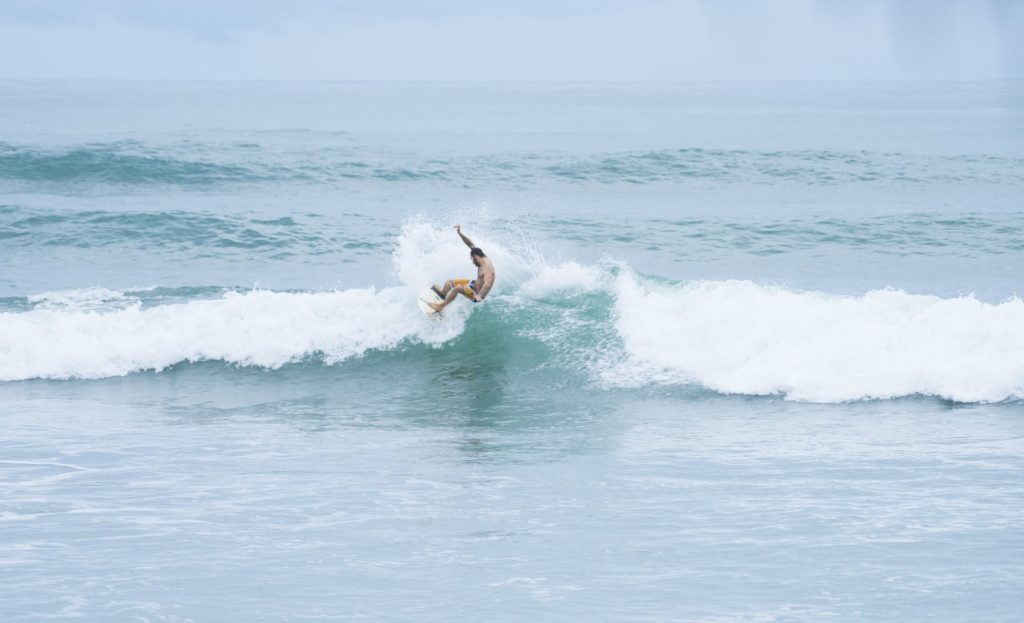
Working out when you don’t have access to surfable waves is a fantastic way to maintain surf fitness. We’re not advocating you start power squatting on the regular and throwing down protein shakes like they’re going out of fashion. We just mean a little bit of resistant band and body weight training to ensure you don’t lose your paddling endurance.
Push-ups, squats, and star jumps are just some of the more popular exercises you can do with just a mat and no equipment. Then there are shoulder extensions with a band wrapped around a tree or a pole, planks to help with your core strength and burpees to better your pop-up technique.
You can also group these exercises together and create your own custom circuit. Changing it up and making it more difficult as you adapt in order to facilitate physical progression.
With a little luck and a lot of effort, you’ll be at peak fitness when you arrive at your surf camp. Ready to take on the swell and show your instructors what you’re made of.
3. Swimming Laps
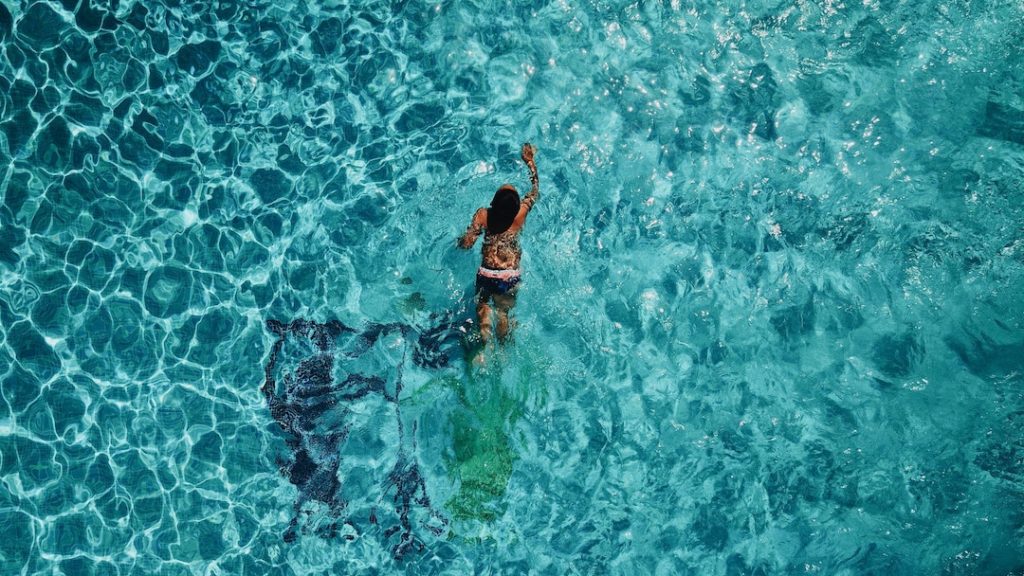
When you can’t surf but you have access to a pool or lake, why not swim some laps? There’s really nothing better for you when it comes to maintaining surf fitness.
With strokes such as freestyle emulating the type of stroke you perform when paddling, while others are great for building lung capacity and general athleticism.
To get started, schedule one or two sessions per week. Begin with a few warm-up laps to get acquainted with the pool and ensure your technique is spot on. Then launch into 30 minutes of swimming freestyle, taking breaks as needed. As you improve, you’ll should up your minutes and complete laps without breaks in between.
Of course, swimming alone for long periods at a time can be a bit dull. Not only that but without someone pushing you, you might be inclined to drop off in pace and effort. If you’re learning to surf with a friend and intend on visiting any of the surf spots for beginners with them, persuade them to join you for a weekly swimming session as a part of your workout routine. They’ll no doubt thank you for it when the surf starts pumping and they’re able to catch multiple good rides in one session.
4. Get Stretching with some Yoga
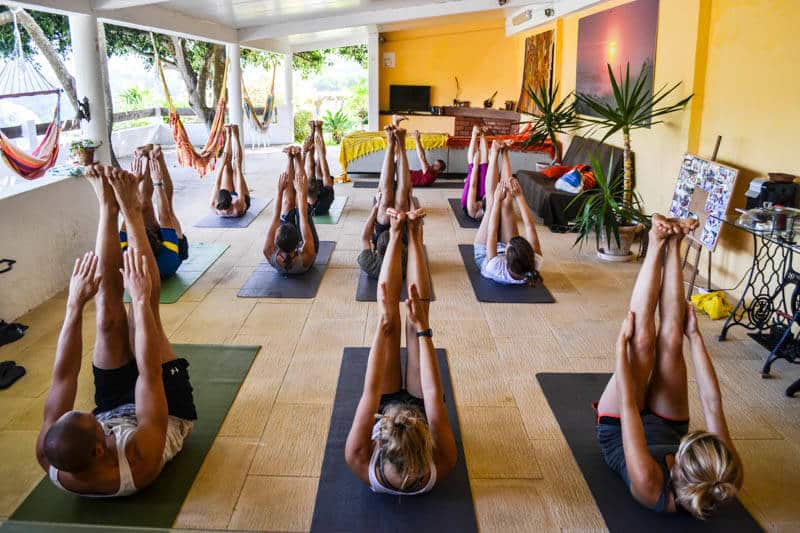
Being flexible in your muscles and your joints make learning to surf infinitely easier. You’ll be able to stand up quicker, rebound from any wipe-outs you may have, and minimize the risk of injuring yourself. We recommend yoga sessions as a part of surf conditioning your body not just before surf lessons or surfing but also during, and long after your stay at one of our surf camps for beginners.
Surf camps like Rapture Surfcamps offer yoga sessions for their guests as it’s probably the easiest surf-specific training you can do. Its a great way to loosen up after a day of surf training and you don’t even have to leave the premises.
By implementing yoga into your surf fitness routine, you’ll also find that you can surf longer and experience less discomfort after a solid session. Maintaining flexibility is especially important as you get older, so if you want to travel the world and surf for as long as possible, yoga will be your secret weapon.
5. Go for a Run
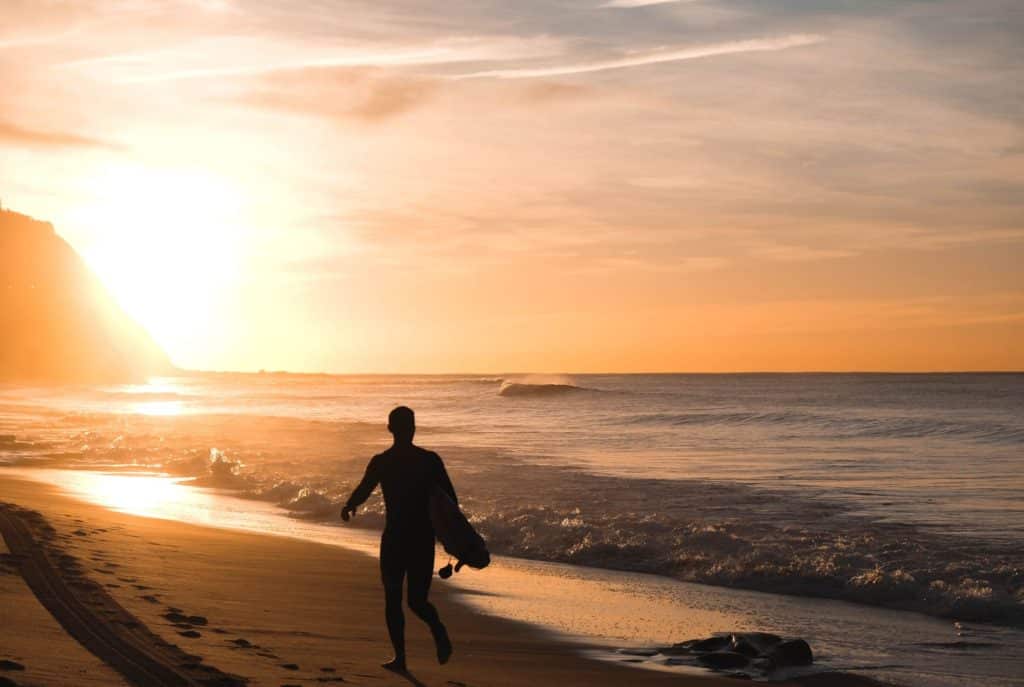
Like swimming, running isn’t for everyone as the physical demands are slightly higher. If we can pluck at one major advantage to cutting some laps around a sporting field or through your city though, it would be that you only need a pair of running shoes in order to do it. This means you can run practically anywhere with very little forward planning. Just pick a route and go.
Another benefit to running is that it activates your leg muscles and builds lung capacity. These are two crucial parts of your body that play a big role in surf conditioning. If you can manage a decent pace, running will also help in weight loss, while some studies showing that running early in the morning can also improve your mental clarity.
The only thing we suggest when it comes to running is that you don’t go too hard at the beginning. Try for a relatively small distance, say between 1 – 2 kilometers, to begin with. Then work your way up from there. This way you mitigate the risk of straining something.
6. Try Paddleboarding on a Lake or River
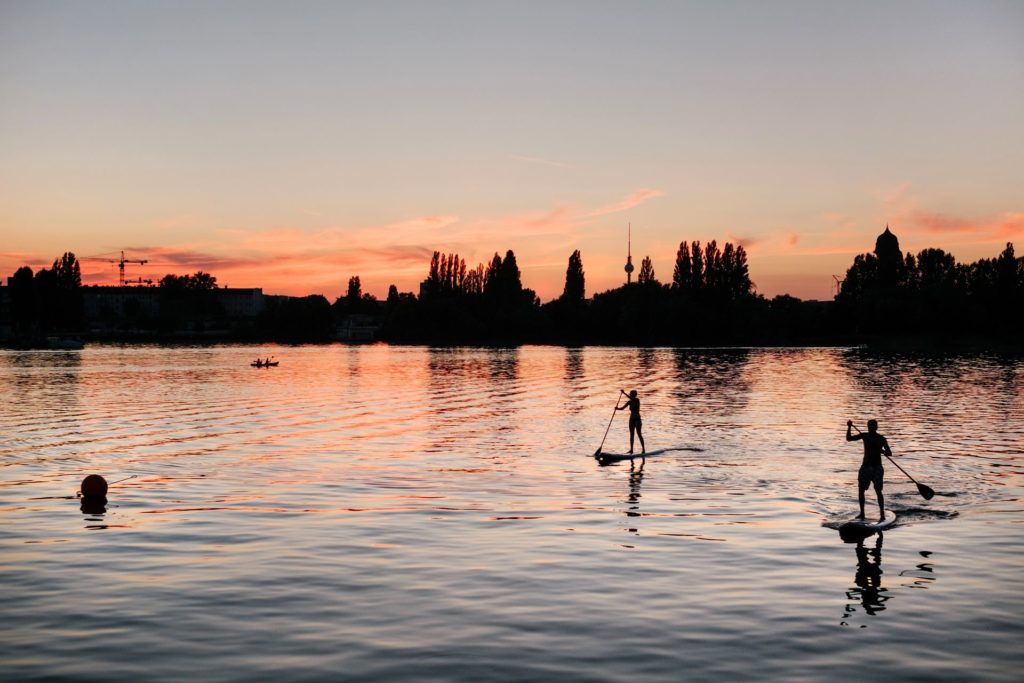
Paddleboarding on an inland body of water such as a lake or river is awesome practice for surfers out of their element. Every stroke you take on a paddleboard builds core strength, not to mention the fact it’s a great activity for keeping your balance game tip-top. Paddleboarding can also be done with friends or by yourself and these days you can find them for sale at reasonable prices if you don’t already own one.
In addition, paddleboarding is accessible to everyone regardless of athletic abilities. As long as you have a paddleboard suited to your skill level, you can jump on and start using it. You don’t have to go hard on a paddleboard either to feel the benefits of it. Simply standing on an unstable platform engages your stabilizer muscles, which are crucial for sitting on your surfboard and maintaining down the line momentum. It is an excellent way to practice some basic surf movements.
7. Lay off the Beers

This one is going to trigger a lot of people, but honestly, taking a break from drinking offers incredible health benefits that will pay off in a big way once you get back in the water.
Plus, if you’re not going out, buying rounds, and otherwise boozing your money away, you’ll be able to put that cash towards booking a beginner surf camp that is worth every buck.
Most of the surf camps have fully stocked fridges anyway. This means you can look forward to rewarding yourself with some post-surf drinks once you arrive. Let’s not beat around the bush though abstaining from drinking does take a whole lot of commitment. So if you think it’s an unnecessary sacrifice, try at the very least to implement a few of the things we’ve put on this list.
Ready to take your surf fitness to the next level? Explore our surf camp packages and join us for an unforgettable surf adventure. Whether you’re a seasoned pro or just starting out, our expert instructors and stunning surf destinations await you. Book your surf experience today and ride the waves with Rapture Surfcamps!
Reviews From Our Guests:

Feling fit, fresh and ready to surf again? #STAYHEALTY
Eat well, stay well, stay fit, and stay positive during these times.
Suggest us some ways to stay healthy during lockdown!
SEND US SOME IDEASStaying fit without surfing involves incorporating alternative exercises into your routine. Focus on cardio activities like running, cycling, or swimming to maintain overall fitness.
Indoor exercises such as yoga, bodyweight exercises (e.g., squats, lunges), and balance training can help enhance core strength and stability crucial for surfing.
Strength training is essential for surfers during off-seasons. Exercises targeting the upper body, lower back, and core help build the strength needed for paddling, balance, and maneuvering on the board.
Yes, flexibility is crucial. Regular stretching, yoga, and mobility exercises help improve range of motion, reduce the risk of injury, and enhance your ability to perform surf-specific maneuvers.
Nutrition is vital. Maintain a balanced diet with a focus on lean proteins, whole grains, fruits, and vegetables. Stay hydrated, and consider supplements like omega-3 fatty acids for joint health.
